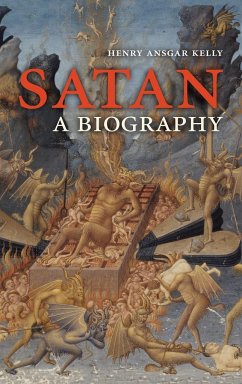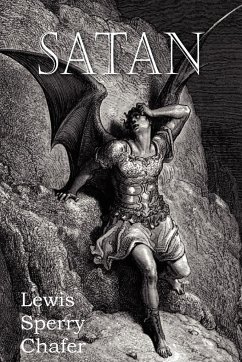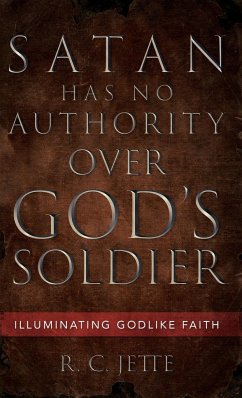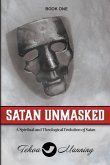This study shows how the Satan of the New Testament became the modern day personification of evil.
Christians traditionally think of Satan as Lucifer, God's enemy, who rebelled against Him out of pride and then caused Adam and Eve to sin. But, as Kelly shows, this portrayal is not biblical but a scenario invented by the early Fathers of the Church which became the 'New Biography of Satan'. The 'Original Biography' must be reconstructed from the New Testament where Satan is the same sort of celestial functionary we see in the Book of Job - appointed to govern the world, specifically to monitor and test human beings. But he is brutal and deceitful in his methods, and Jesus predicts that his rule will soon come to an end. Kelly traces the further developments of the 'New Biography': humankind's inherited guilt, captivity by Satan, and punishment in Hell at his hands. This profile of Satan remains dominant, but Kelly urges a return to the 'Original Biography of Satan'.
Review quote:
'[Kelly's] interpretation is accepted by many biblical scholars. The theory provides an explanation for the presence of evil and suffering, without denying the existence or omniscience of God. - The professor makes the case for Satan as more a 'functionary of the divine court' than 'an enemy of God as well as of Man, a convicted cosmic outlaw'.' The Times
'Kelly's stunningly bold attempt at rehabilitation makes the late Lord Longford's efforts to convince the British public that Moors murderer Myra Hindley was a reformed character look positively timid.' Daily Mail
'Kelly shows himself to be a masterful teacher. - [He] illustrates nicely a sound approach in historical theology.' Professor Daniel J. Harrington, S. J., Weston Jesuit School of Theology in Cambridge, Massachusetts
'- enough here to stimulate and entertain. - astute and deftly written -' Literary Review
Table of contents:
List of illustrations; List of abbreviations; Introduction; Part I. Hebrew Backgrounds: 1. The Old Testament; 2. Apocryphal works and the Dead Sea Scrolls; Part II. The New Testament: Satan Comes Into His Own: 3. St. Paul, the first Christian writer; 4. The four Gospels; 5. Later Epistles; 6. The apocalypse of John the Divine; 7. Putting the New Testament together: a composite portrait of Satan in canonical order; Part III. Satan and Adam: 8. Satan's original sin: felling Adam; Part IV. The Rise of the Fallen Lucifer: 9. Lucifer and the new biography of Satan; 10. Satan and the human race; 11. Theorizing Satan; 12. Satan in literature and art; Part V. Satan in the Modern World: 13. Temptation and possession; 14. Doubts and affirmations; Summary and conclusion; Index of passages; General index.
Hinweis: Dieser Artikel kann nur an eine deutsche Lieferadresse ausgeliefert werden.
Christians traditionally think of Satan as Lucifer, God's enemy, who rebelled against Him out of pride and then caused Adam and Eve to sin. But, as Kelly shows, this portrayal is not biblical but a scenario invented by the early Fathers of the Church which became the 'New Biography of Satan'. The 'Original Biography' must be reconstructed from the New Testament where Satan is the same sort of celestial functionary we see in the Book of Job - appointed to govern the world, specifically to monitor and test human beings. But he is brutal and deceitful in his methods, and Jesus predicts that his rule will soon come to an end. Kelly traces the further developments of the 'New Biography': humankind's inherited guilt, captivity by Satan, and punishment in Hell at his hands. This profile of Satan remains dominant, but Kelly urges a return to the 'Original Biography of Satan'.
Review quote:
'[Kelly's] interpretation is accepted by many biblical scholars. The theory provides an explanation for the presence of evil and suffering, without denying the existence or omniscience of God. - The professor makes the case for Satan as more a 'functionary of the divine court' than 'an enemy of God as well as of Man, a convicted cosmic outlaw'.' The Times
'Kelly's stunningly bold attempt at rehabilitation makes the late Lord Longford's efforts to convince the British public that Moors murderer Myra Hindley was a reformed character look positively timid.' Daily Mail
'Kelly shows himself to be a masterful teacher. - [He] illustrates nicely a sound approach in historical theology.' Professor Daniel J. Harrington, S. J., Weston Jesuit School of Theology in Cambridge, Massachusetts
'- enough here to stimulate and entertain. - astute and deftly written -' Literary Review
Table of contents:
List of illustrations; List of abbreviations; Introduction; Part I. Hebrew Backgrounds: 1. The Old Testament; 2. Apocryphal works and the Dead Sea Scrolls; Part II. The New Testament: Satan Comes Into His Own: 3. St. Paul, the first Christian writer; 4. The four Gospels; 5. Later Epistles; 6. The apocalypse of John the Divine; 7. Putting the New Testament together: a composite portrait of Satan in canonical order; Part III. Satan and Adam: 8. Satan's original sin: felling Adam; Part IV. The Rise of the Fallen Lucifer: 9. Lucifer and the new biography of Satan; 10. Satan and the human race; 11. Theorizing Satan; 12. Satan in literature and art; Part V. Satan in the Modern World: 13. Temptation and possession; 14. Doubts and affirmations; Summary and conclusion; Index of passages; General index.
Hinweis: Dieser Artikel kann nur an eine deutsche Lieferadresse ausgeliefert werden.








